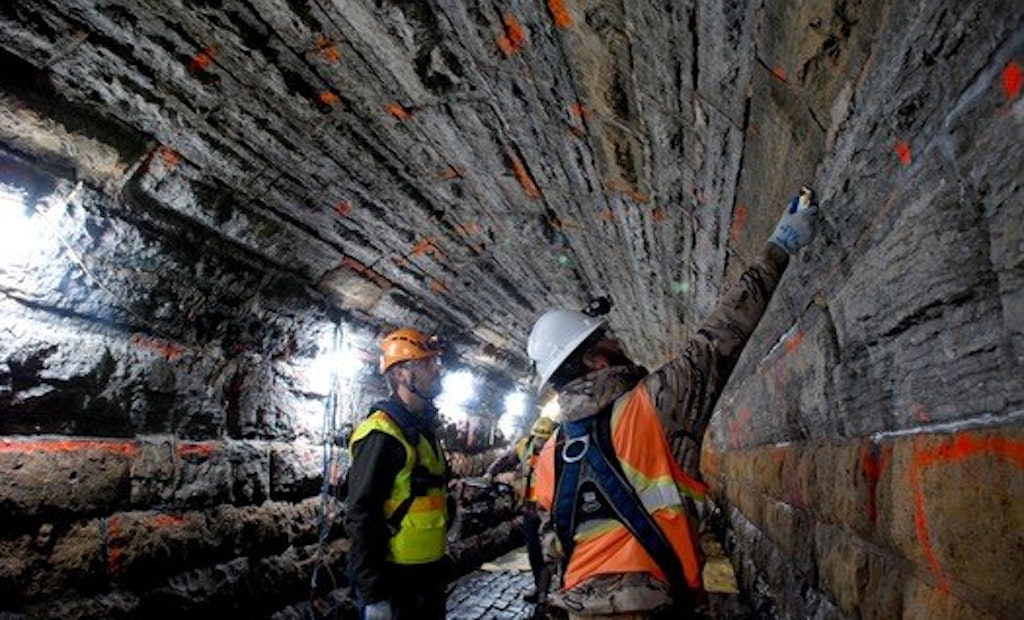Interested in Infrastructure?
Get Infrastructure articles, news and videos right in your inbox! Sign up now.
Infrastructure + Get AlertsFor a Minnesota watershed district, a months-long repair of a large stormwater tunnel turned into a prime public outreach opportunity.
In December, the Capitol Region Watershed District began fixing the areas of missing or damaged mortar between the large limestone blocks of the Trout Brook Sewer System, a century-old underground tunnel running 6 miles and carrying runoff from several communities in the St. Paul area to the Mississippi River.
Instead of simply getting in, taking care of the repairs, and getting out, district officials decided to go a step further.
“When we started this project, we saw a large section lit up and we thought: ‘Wow, this is a perfect opportunity to take some nice photographs and video of the tunnel and show the community what happens beneath the ground,’” Anna Eleria, division manager, told the Star Tribune. “A lot of our work happens underground or in structures that are not evident to the general public. This was a chance to show the importance.”
The repair work is starting to wrap up, and the district also recently released the results of its video work, showing area residents a glimpse of a piece of infrastructure they wouldn’t typically be able to see and providing perspective on the public’s role when it comes to infrastructure and water quality.
The Trout Brook system once carried both sewage and stormwater, but it has been exclusively a storm sewer since 1988. Nearly 4 billion gallons of water flow through it annually from an 8,000-acre drainage area. Since the water isn’t treated before discharging into the Mississippi, the district has continuously looked for ways to solicit citizens’ help in keeping the stormwater flow as unpolluted as possible. In 2015, the district launched a pilot project with a local university and the city of St. Paul to urge people to adopt storm drains and keep debris away from them, then record and report the amount of material they collect during the year.
Check out the video Capitol Region Watershed District recently released as its latest public outreach effort. What are the methods your utility uses to engage the public? Comment below or email kyle.rogers@colepublishing.com.
Rivers Beneath the City: Connecting Your Neighborhoods to the Mississippi from Capitol Region Watershed Dist. on Vimeo.






